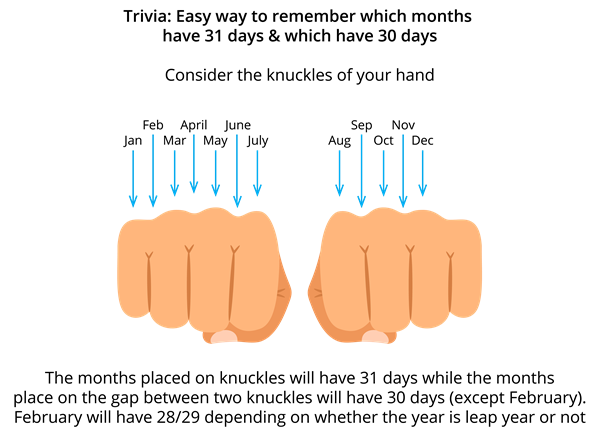UPSKILL MATH PLUS
Learn Mathematics through our AI based learning portal with the support of our Academic Experts!
Learn moreOrdinary year:
\(1\) year \(=\) \(12\) months
\(1\) year \(=\) \(52\) weeks \(+\) \(1\) day
\(1\) year \(=\) \(365\) days
\(1\) month \(=\) \(30\) days or \(31\) days
\(1\) month \(=\) \(4\) weeks \(+\) few days
\(1\) week \(=\) \(7\) days
Ordinary February month has \(28\) days.
Leap year:
\(1\) year \(=\) \(366\) days
\(1\) day is added in the month of February.
Important!
In a Leap year, February month has \(29\) days.
Leap year comes once in every four years.
Identifying a leap year:
A year which is divisible by \(4\) is a leap year.
A century which is divisible by \(400\) is a leap year.
Periods of time:
\(10\) years \(=\) \(1\) decade
\(100\) years \(=\) \(1\) century
\(1000\) years \(=\) \(1\) millennium
Jubilee:
A jubilee is a particular anniversary of an event.
\(25^{\text{th}}\) \(-\) Silver Jubilee
\(40^{\text{th}}\) \(-\) Ruby Jubilee
\(50^{\text{th}}\) \(-\) Golden Jubilee
\(60^{\text{th}}\) \(-\) Diamond Jubilee
\(65^{\text{th}}\) \(-\) Sapphire Jubilee
\(70^{\text{th}}\) \(-\) Platinum Jubilee

Important!
The study of measurement of time is called as "HOROLOGY".